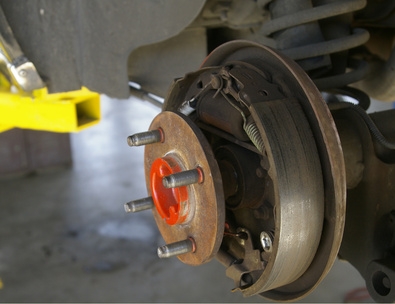
Brake fade describes a reduction in the ability of brakes to slow a vehicle. There are three types: green fade, fade from overheating and fluid fade.
Green fade is the most common. It is the result of new brake pads being fitted. New brake pads need time to cure, a process which happens naturally through use, before they become fully effective. If they are not fully cured, they can release gases under the heat of intense braking and those gases form a cushion which reduces friction between the pad and the disc or drum.
Brake pads are made of a complex mix of materials. One is a resin. Sustained heavy braking can cause the brakes to heat up so much that they melt the resin and the melted resin acts as a lubricant between the pad and the disc or drum which causes the brakes to slip.
Brake fluid is capable of absorbing water from the air. When water is absorbed, the boiling point of the fluid is lowered. If the boiling point of the fluid becomes too low, then heat from braking can cause it to boil. When the fluid boils a gas is released which remains in the tubes. When the brakes are pressed, instead of compressing the fluid, the gases are compressed and less power is applied to the brakes.